Cover Crop
- May 30, 2019
Out in the vineyard, we try to use the most natural and sustainable techniques possible. One crucial part of having a vineyard is working to improve soil health – both nutrient richness and soil structure. A primary strategy for achieving this is by planting a cover crop. A cover crop is a mix of legumes and beans that fix nitrogen into the soil and increase biomass. Our mix includes bell beans, magnus peas, dundale peas, common vetch, barley and oats. The beans, peas and vetch are the nitrogen fixers, while the barley and oats generate biomass in the soil.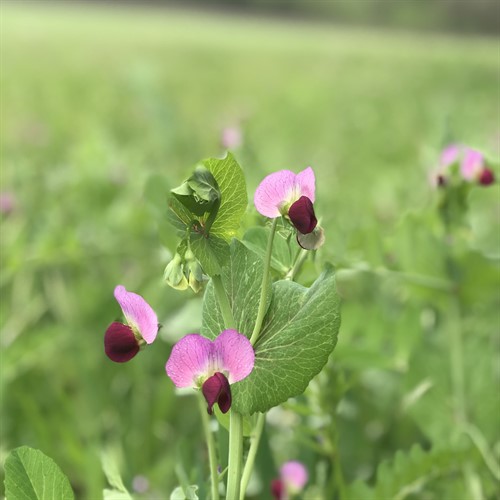
We seed every other vineyard row with the cover crop in October. It grows through the Winter, and in the Spring, we cultivate it back into the soil. There are four main steps to the cultivation process.
- Mow the cover crop, so it is a more easily digestible matter for the soil microbes. We use a flail mower for this part.
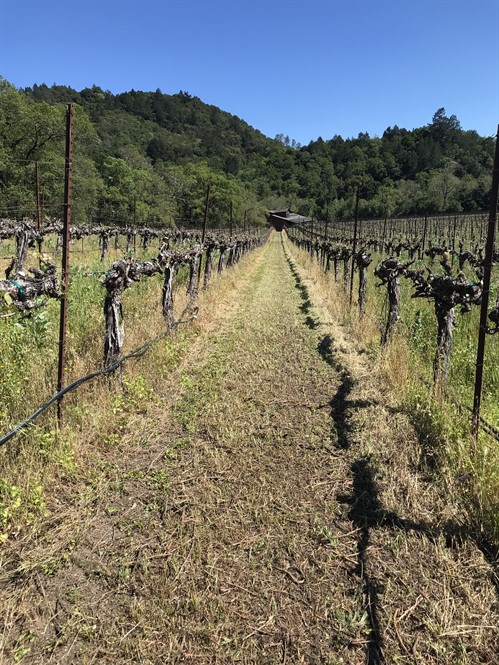
- Cultivate under the vine. The mower only shreds the row but not under the vine. Since we do not spray any herbicides, we use two machines that are able to cut the roots of plants under the vines. Those that still remain are shoveled out by hand.
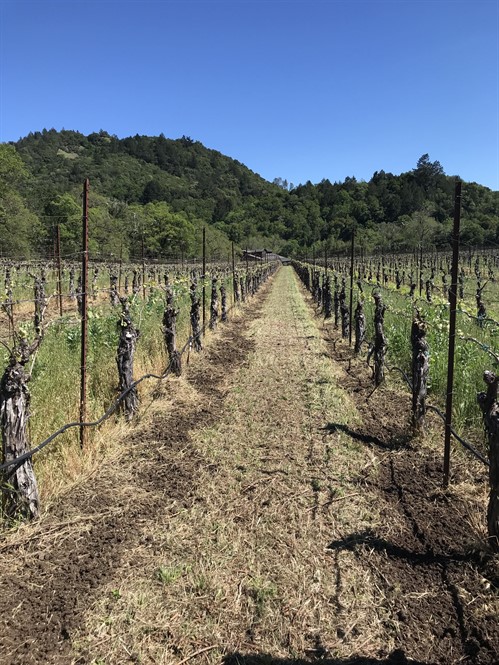
- Disc the cover crop into the soil. This pass uproots the cover crop and turns the soil over.
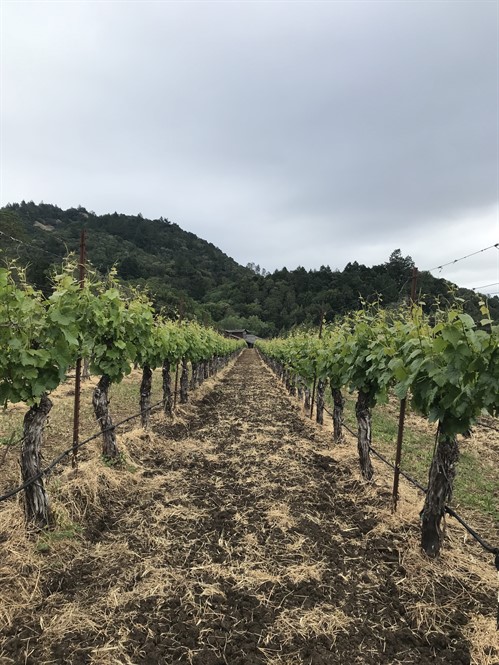
- Disc again with a ring roll. This pass breaks up and flattens the top layer to help seal the surface of the soil. This creates “dust mulch”, which helps to retain water.
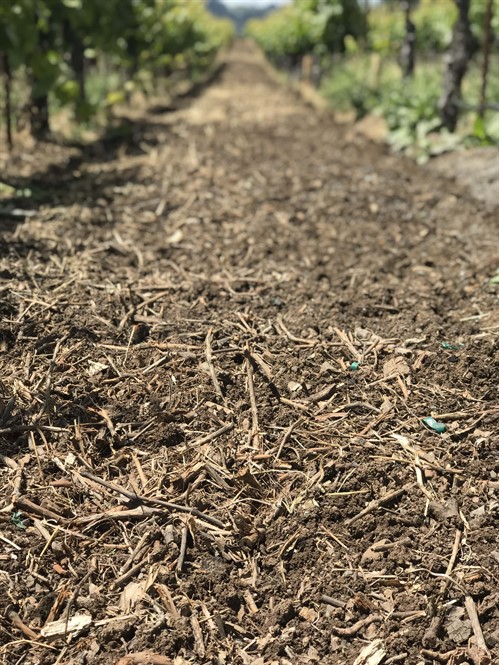
This year, we are replanting 10 acres of vines, so we seeded the fallow blocks with the same cover crop. We cultivated the replant area one month later than the rest of the vineyard.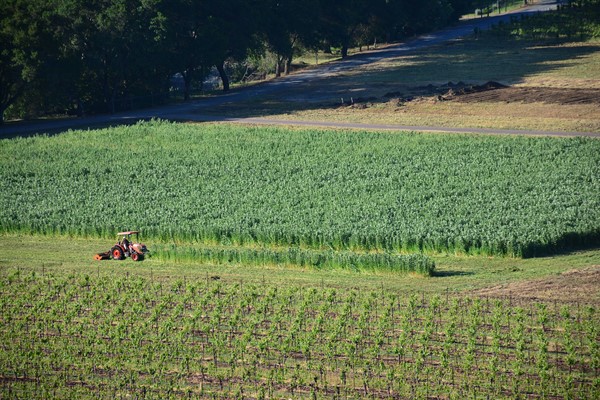 In that month, we had more rain and some warm temperatures which advanced the cover crop’s growth. It was quite tall!
In that month, we had more rain and some warm temperatures which advanced the cover crop’s growth. It was quite tall!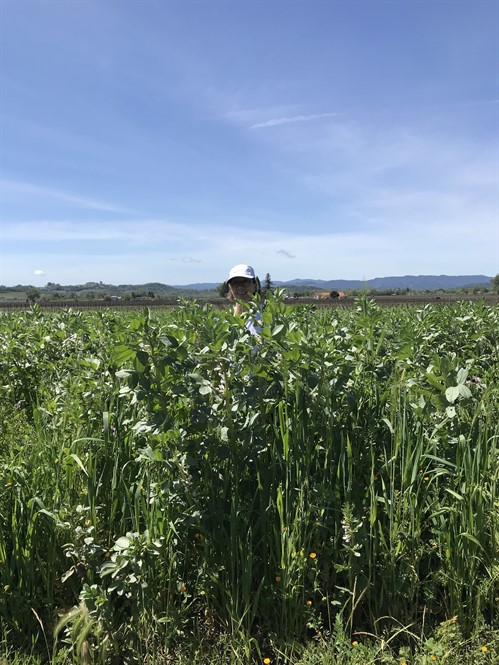
Sarah Hafner amongst the cover crop is 5’4”.
The biggest challenge with cover crop is deciding when to start the cultivation process. If we have an early budbreak, I try to mow the cover crop early, that way if we have a frost, the cold temperatures lay lower to the ground, instead of rest on top of the tall cover crop closer the fragile new growth. When the cover crop is mowed, there can be a 2-degree difference between the ground and the buds on the vine. That’s a huge difference in terms of frost damage. If we have a late budbreak, I wait to mow the cover crop in order to get the most nitrogen from the legumes as possible. This gives me two options:
- Early budbreak: mow early to protect from frost
- Normal/Late budbreak: mow late to harness more nitrogen
In theory, it sounds straightforward, but nothing in farming is. There are many factors that contribute to decisions such as cover crop cultivation. This year, we had a late budbreak, so we mowed later. However, we had significant and consistent rain well into the Spring, so the soil never dried out enough for us to drive tractors into the vineyard. We ended up cultivating the cover crop three weeks later than normal. Luckily, rain yields warmer temperatures, so we were not concerned about frost.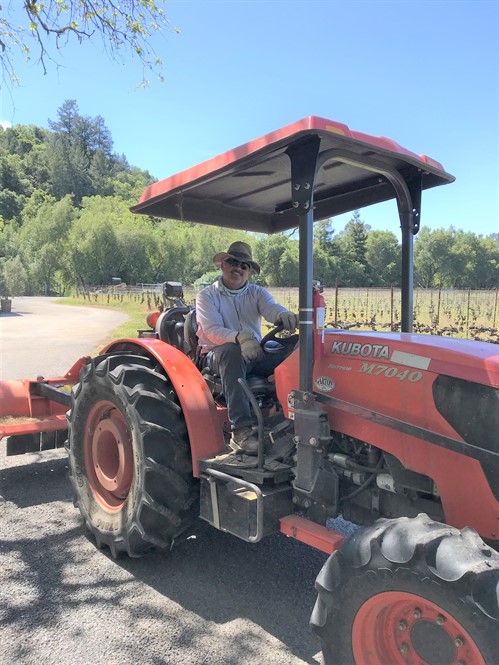
Gerardo, our most senior tractor driver, is discing the rows.
Once the cover crop has been incorporated into the soil, I am always pleased with the substance and biomass it has accumulated.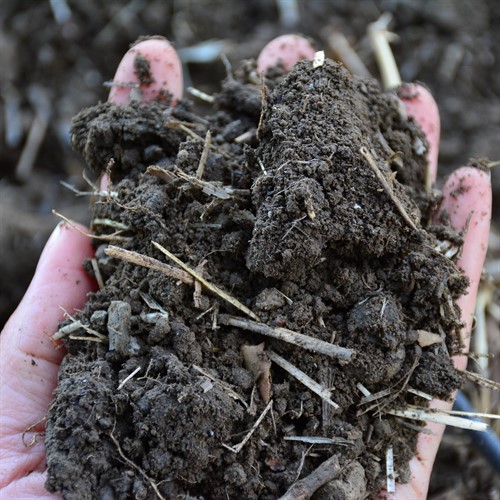
Holding the soil, I am pleased with the richness and fertility after the cover crop has been cultivated. The cover crop leverages Mother Nature’s nutrient cycle to provide fertility needs to the soil, using nature to improve nature. I’m always in awe of the tools that Mother Nature provides. Each year that we continue seeding a cover crop, the soil becomes richer and healthier, strengthening it for decades to come.



